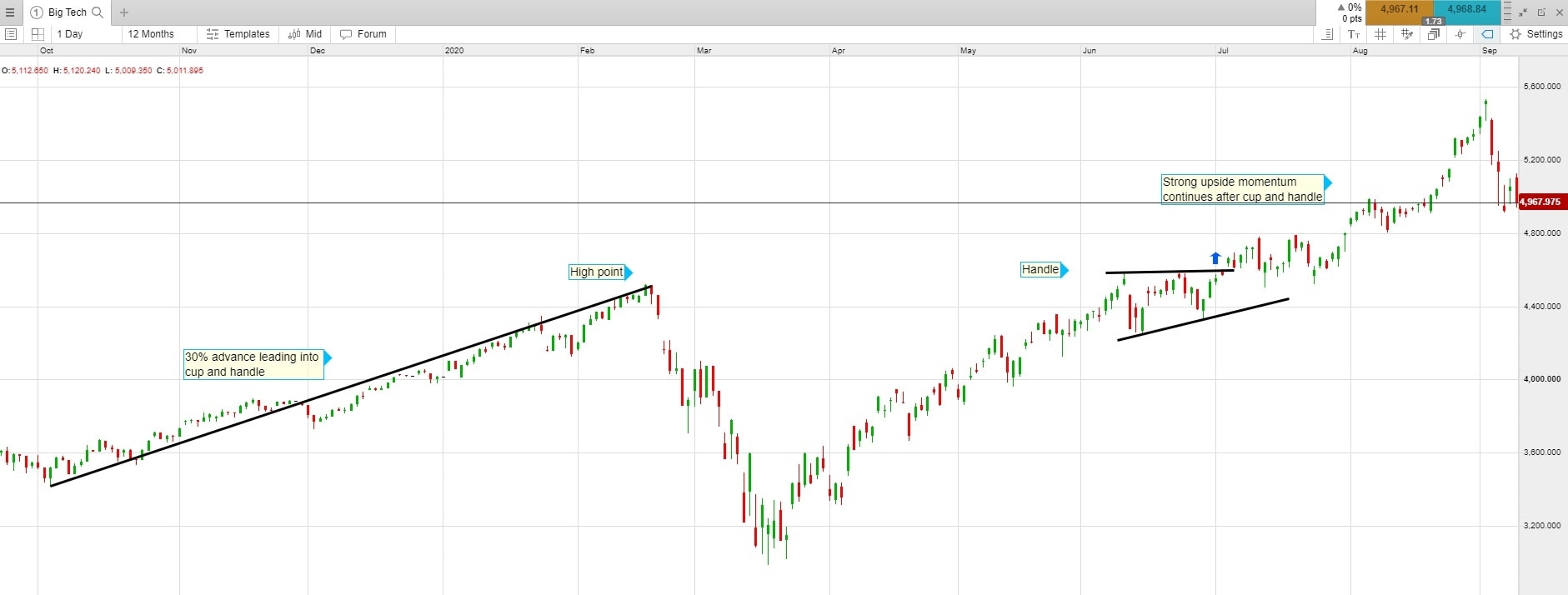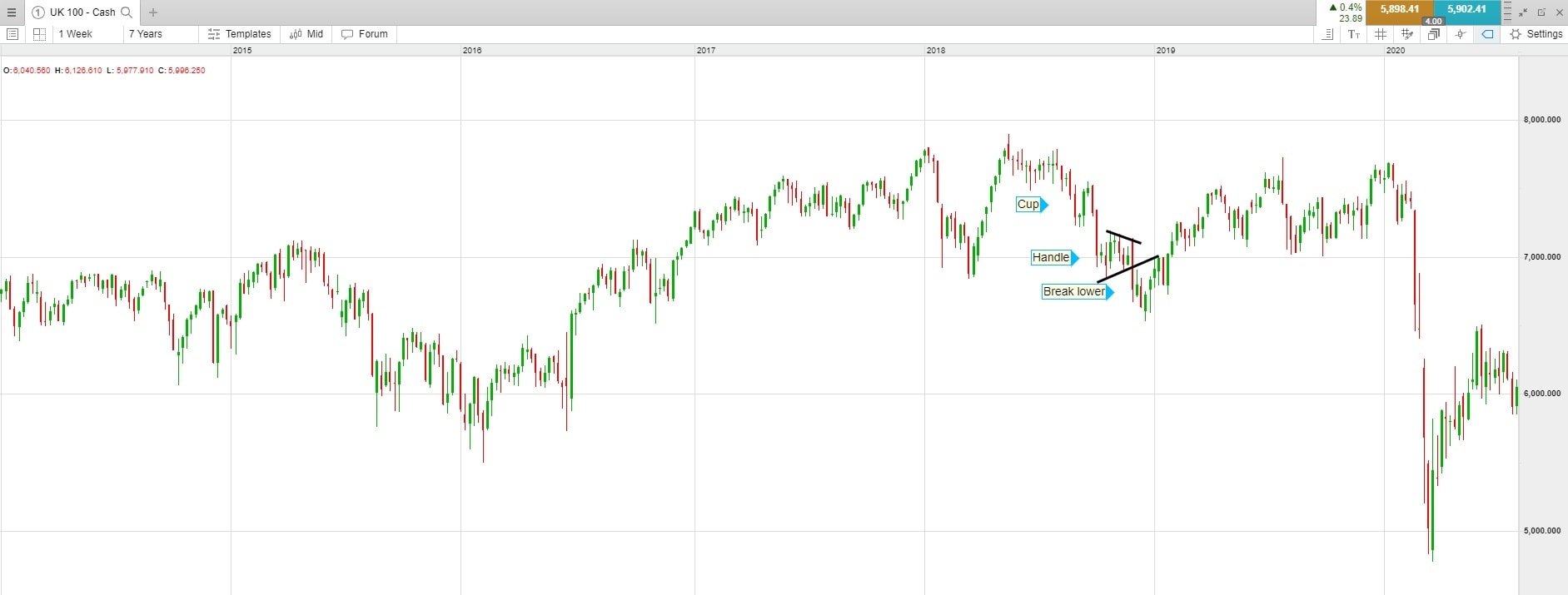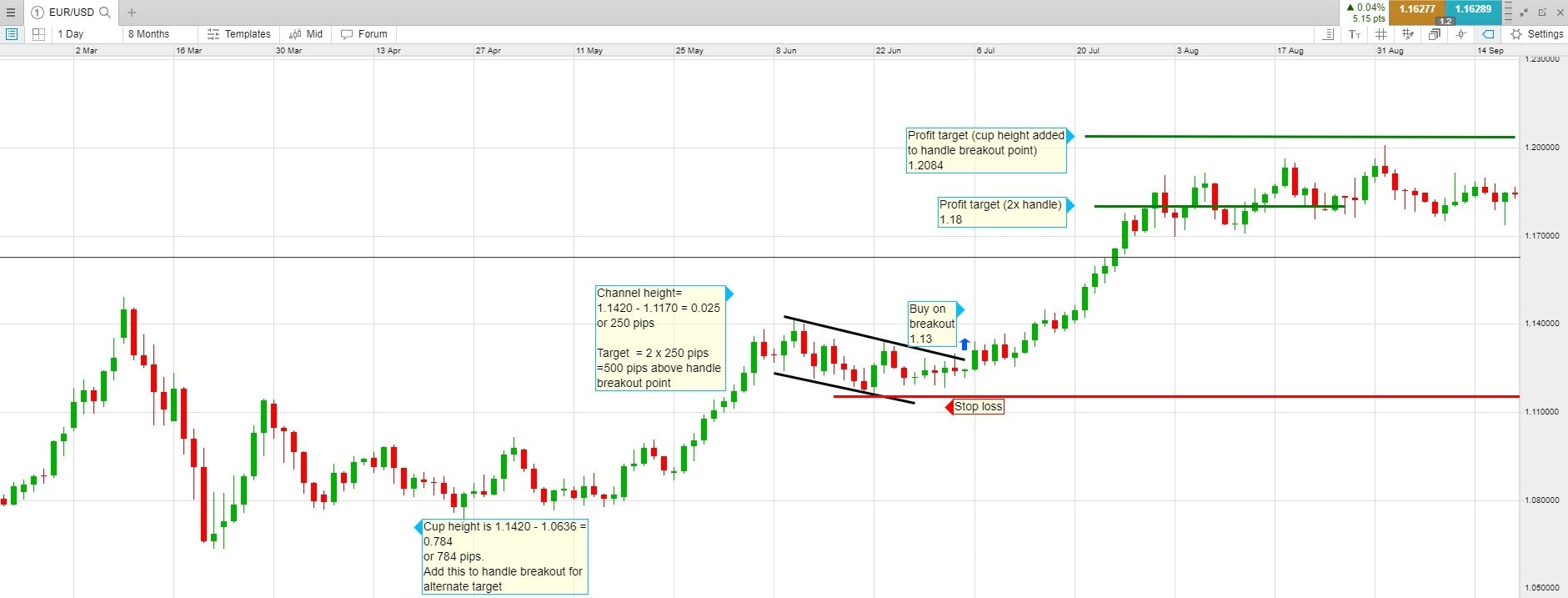A cup and handle pattern is formed when there is a price rise followed by a fall. The price rallies back to the point where the fall started, which creates a “U” or cup shape. The price then forms the handle, which is a small trading range that should be less than one third of the size of the cup. It can be horizontal or angled down, or it may also take the form of a wedge or triangle.
When the pattern is complete, a long trade could be taken when the price breaks above the handle. However, some traders make the mistake of assuming that once a U-shape forms, the price will drop to form a handle. It may not, so you should ideally avoid trading the pattern until it has fully formed, in order to confirm the trend. You could wait for the price to break above the handle to signal that the uptrend is continuing. This is called a bullish continuation pattern.























